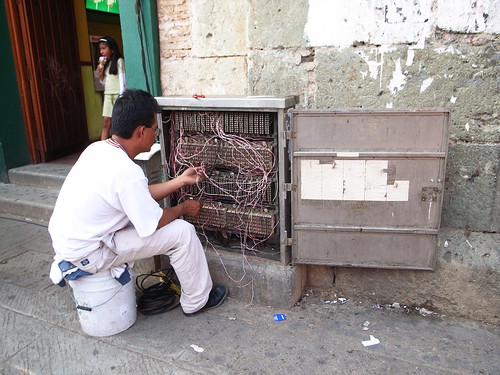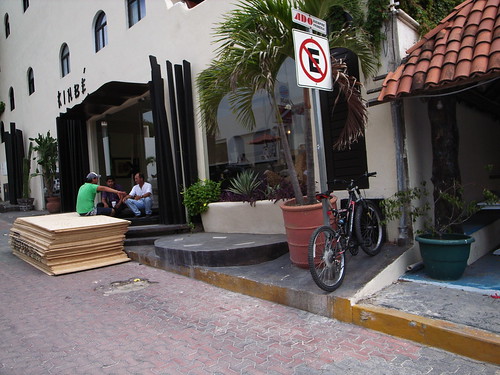Brown, B., Taylor, A.S. Izadi, S. Sellen, A. Kaye, J.J and Eardley, R. (2007). Locating Family Values: A Field Trial of the Whereabouts Clock, Going to be presented at Ubicomp 2007, Innsbruck.
The paper reports the study of long-term trails of a location-awareness system I a have already mentionned here: the Whereabouts Clock. This basic device, situated in the home allows family members to see where other members of the family are by looking at a Clock (showing categories such as "home”, “work”, “school” and “elsewhere”).

The results showed how, for these families, "location awareness was less about coordination and more about family members’ emotional connection to one another". It was less about communicating the people's whereabouts but rather to support family in what they already know about each other (some form oa reassurance) and that one expects. The part that struck me as the most relevant, resonates with my PhD research; I was actually very interested in their discussion of "location" versus "location in interaction":
"the WAC let us explore location not as a technical feature of a system, but as something interleaved with a family’s interactions with each other. We would argue that the value of location technologies are seldom simply in their ability to track objects and people, but rather in how that tracking is, in the end, used. For location awareness, whether it is of family members or delivery trucks, this means in interaction. It is seldom the autonomous tracking of position that is important but what that tracking means to others involved – such as when a truck driver needs to explain to management the extra long route they took, or just a family member explaining why it took them so long to come home.
(...)
location-in-interaction: how it is that location is used, read, viewed, and manipulated by groups, and what this can support. These activities are directly connected to the accuracy, resolution, or whatever, of a positioning system, but these technical aspects can only ever be a partial account of location’s role. Our point is not that inaccuracy is unimportant – as we have mentioned, the inaccuracies of the WAC (or more specifically: its flutter) caused unnecessary distress. It is rather that it remains to be seen what accuracy is in a specific interactional situation, and we should not simply assume accuracy is a uniform concept.
(...)
Location was understood, even at a glance, in the context of what that person ordinarily did, and their ordinary patterns and routines.
(...)
Location for our study’s families was not only meaningful in terms of their intimate knowledge of one another, it also had moral connotations. By this we mean that there were “right” places to be and “wrong” ones. "
Why do I blog this? as I said, this is very tight to the work I've done in my PhD research, in which I explored how location is interpreted and used in both virtual environments and ubiquitous computing. In my research, I've shown how location-awareness can be an impediment to collaborative processes (people remembered less their partners' paths when having an automatic location-awareness tool). The conclusion in this paper is very similar in the sense that the implications that it shows how location awareness is not simply about optimizing "the underlying technology, but rather to optimize the fit between the technology and users’ values and practices. For instance, as they described:
" there has been a considerable body of work on optimizing tracking within buildings, as an extension to traditional GPS which on the whole only works well outside. Yet from a consideration of what location means in interaction, it may be that whether we are indoors or outdoors and what address we are at can be of more importance than our spatial location within a building. We might only want to know if one is inside a commercial establishment, waiting outside, or at a house next door. "
Two others ideas that I found extremely pertinent here:
- the idea of deliberatively lowing the accuracy resolution (the importance is less the accuracy of information but rather to provide a mean for reassurance).
- providing a mean to tweak the system, by allocating the term "work" to other places (a person used the category "work" for gardening). This is very relevant to allow people expressing what they want (even to lie).













